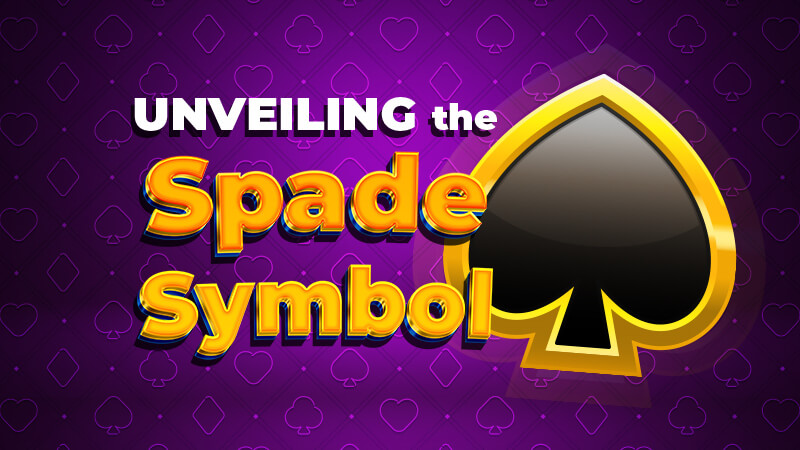Тhe true origin of the spade shape remains somewhat elusive, and it’s likely that multiple factors and influences contributed to its design.
1. History of the Spade Symbol
To understand the spade symbol, we must delve into the annals of history. While the exact origins and timeline are not precisely documented, we can provide an overview of its history:
Medieval Europe: Playing cards originated in China during the Tang Dynasty (618–907 AD) and gradually spread to Europe. The earliest European playing cards date back to the late 14th century. These early cards often had suit symbols that included swords, cups, coins, and batons. Swords, represented as spades, were one of these suits.
Evolution of the Symbol: The earliest representations of the spade suit often featured a sword shape. The symbol evolved over time, becoming more abstract and stylized. The modern spade symbol, as we know it today, resembles an upside-down heart with a stem.
French Playing Cards: The French deck of cards, which is the most widely used deck in the world today, played a significant role in shaping the spade symbol’s appearance and name. In French, the spade suit is called “pique,” which translates to “pike” or “pointed tool.” This name likely reflects the historical association with swords and sharp objects.
Global Adoption: With the expansion of European colonialism and trade, European-style playing cards, including the spade suit, were introduced to various parts of the world. These cards were often adapted to local cultures and languages, resulting in variations of card decks worldwide.
2. Spade Symbol Meaning
As we mentioned, it is widely believed that the spade was once represented as a sword. This association with weaponry suggests themes of conflict, power, and warfare. However, the spade symbol is also associated with the following meanings or interpretations:
The Spade as a Farming Tool
Intriguingly, the spade symbol also has ties to the world of agriculture. Its shape bears a resemblance to a gardening tool used for digging and planting. In this context, the spade may symbolize labor, toil, and the fruits of one’s labor. This dual nature of the spade, representing both conflict and farming, highlights its versatility as a symbol.
Fortune-Telling and the Spade
Beyond card games, the spade symbol has found a place in divination and fortune-telling practices. In tarot cards, the suit of swords shares similarities with the spade and is often associated with the intellect, challenges, and change. As a result, the spade can symbolize pivotal moments or conflicts in one’s life, depending on its context in a reading.
Cultural Significance
The spade symbol’s impact extends beyond card games and fortune-telling. It has appeared in art, literature, and various cultural contexts. Artists have incorporated spade motifs into their works, using them to convey themes of conflict, transformation, and power. In literature, the spade can be a symbol of hidden truths or buried secrets, adding depth to storytelling.
3. Spade shape – other theories
There are a few theories and possibilities regarding the origin of the spade shape:
- Leaf Shapes: The spade suit may have been named after the shape of leaves or foliage. The spade symbol does somewhat resemble a leafy, pointed shape, which could have contributed to its name.
- Italian Suits: Some sources suggest that the suit symbols in standard playing cards, including spades, have Italian origins. In Italian, “spada” means “sword,” and it’s possible that the name “spade” was derived from this word.
- Egyptian Connection: There is a theory that connects the spade symbol to ancient Egyptian hieroglyphs. Some suggest that the spade shape could be inspired by hieroglyphs or symbols used in ancient Egyptian culture. However, there is limited evidence to support this theory.
- Linguistic Influence: The name “spade” itself may have played a role in shaping the symbol. It’s possible that the name influenced the design of the symbol, as card makers sought to create a visual representation that matched the name, whether it originally meant “sword” or had another meaning.


